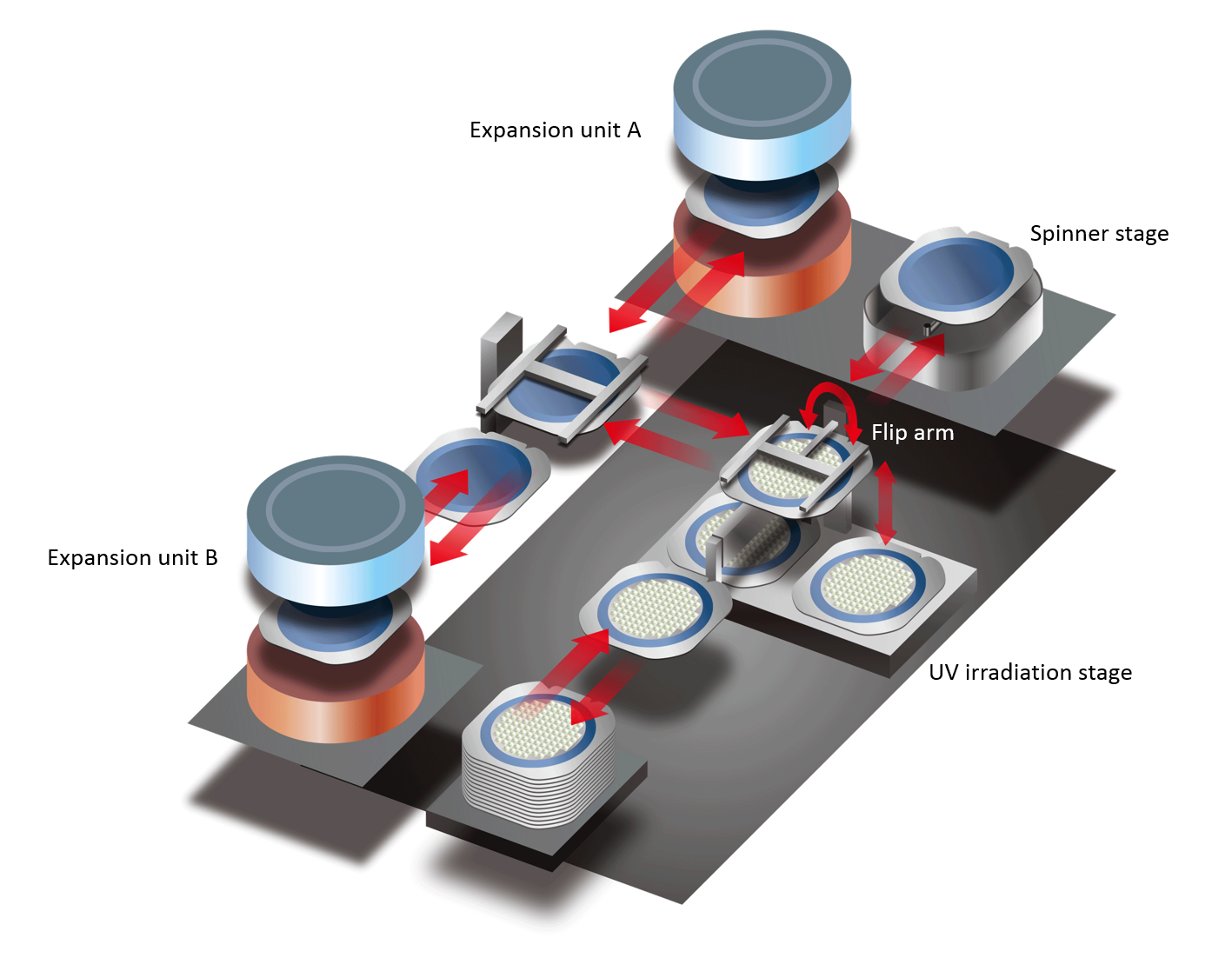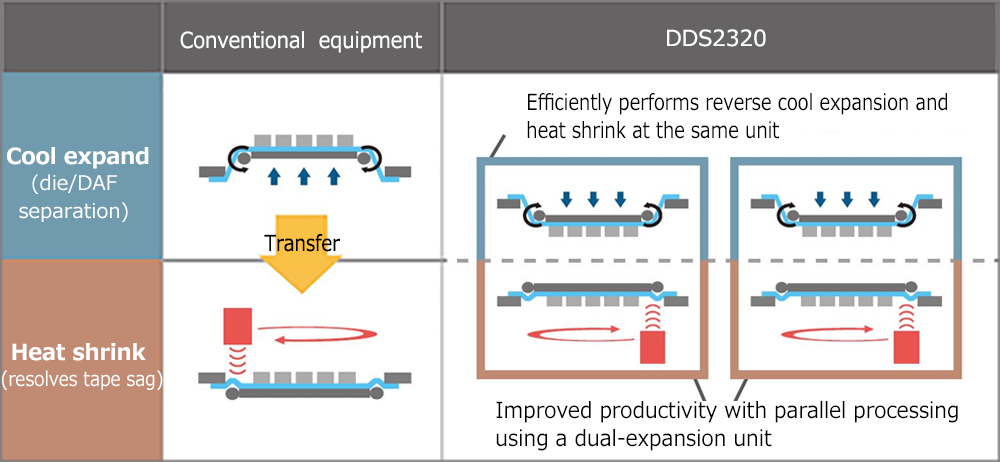Improved Productivity and Reliability for Thin Memory Chips
Development of DDS2320, Die Separator with Dual Processing Stage
DISCO CORPORATION (Head Office: Ota-ku in Tokyo; President: Kazuma Sekiya), a semiconductor manufacturing
equipment manufacturer, has developed DDS2320, a fully automatic die separator capable of processing Φ300
mm wafers that contributes to improved throughput and reliability in memory production.
This equipment will be exhibited at SEMICON Japan 2019 (December 11 to 13, Tokyo Big Sight).
Development Background

Memory demand is expected to increase with the development of IoT, AI, and ADAS. As a result, productivity improvement in memory chip manufacturing and improvement of post-processing device reliability will be required more than in the past. While DISCO had previously introduced the die separator* DDS2300 to the market, DD2320 has been newly developed to meet these emergent needs.
* Die separator: Equipment used to singulate die from workpieces attached to dicing tape. First, die attach film, which is used to mount and laminate thin die, or a wafer with an internal SD layer formed after laser stealth dicing is attached to the tape. Then, the die are singulated by expanding the tape.
Features of DDS2320
Improved productivity
Efficient production of thin die is now possible due to the adoption of a newly developed expansion unit.

- Cool expansion and heat shrinking in one unit
In previous models, separate processing units were used for cool expansion and heat shrinking, but DDS2320 conducts both processes using one unit. With workpiece transfer between units no longer required, DDS2320 achieves reduced risk of damage during transfer and improved productivity. - Parallel processing with dual expansion unit
Previous models had only one expansion unit, but DDS2320 has mounted two expansion units. This enables parallel processing, through which improved productivity can be expected. As with the previous model, DDS2320 can proceed directly to the die bonding process with the tape frame after heat shrinking.
Improved device reliability post-processing
Particle adhesion is reduced by performing processing and transfer after reversing the workpiece, leading to improved device reliability and yield.
- Reverse-side cool expansion / heat shrinking
Re-adhesion is prevented by performing expansion and heat shrinking after turning the workpiece surface downward, causing particles produced during die singulation / tape expansion to fall off. - Reverse-side spinner cleaning/transfer
Spinner cleaning is performed after die singulation, with the workpiece surface still facing downward. This process further contributes to the reduction of particle adhesion.

Approximately 40% footprint reduction
In previous models, auxiliary equipment was installed in the area around the main equipment. DDS2320 achieves a smaller footprint by having the auxiliary equipment installed internally.
Schedule
| Exhibited at SEMICON Japan 2019 | December 2019 |
|---|---|
| Sales release | July 2020 |
Contact
Please feel free to contact us with any questions or inquiries.
